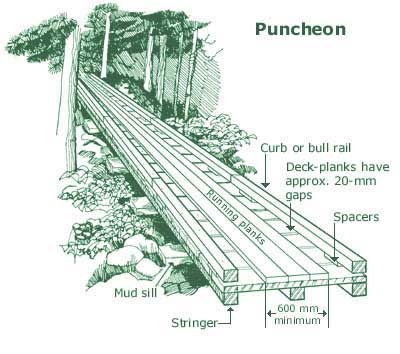Plank Road in Newburgh, NY, is just one of many roads that were once paved with thick wooden planks. The planks have disappeared over time, but the name remains.

Anatomy of a plank road.
During the 1840s and 1850s, covering the surfaces of dirt roads with wooden planks became a hot item, especially in New York State. The first planked road in the United States was constructed in Syracuse, New York, and was a success. It was hoped that these improved roads would transport people, farm goods, and manufactured products to their destinations much quicker and with less hassle.
Seeing the potential in this technology, the State of New York passed legislation that paved the way for entrepreneurs to start road planking companies. All they had to do to get a charter was form a group of investors and then raise $500.00 for each mile of road they wanted to resurface.
So why would you bother? These companies experienced a return on investment. At regular intervals on a road, there would be toll gates where a toll was collected for anyone or anything that traveled the road – people, cattle, horses, wagons, all were tolled at regular intervals, just like cars on the Thruway.
Plank Road in Newburgh was one of several area roads that were resurfaced in the mid-1800s. It is unique in the Hudson Valley in that the road retains its original name, derived from the type of road surface.
Newburgh and Shawangunk Plank Road
Chartered: March 24, 1850, Abandoned within Newburgh 1853
Route: Wallkill – Newburgh
Modern Path Follows: Water Street, Leroy Place, North Street, Plank Road, NY 32, NY 300
Ad
The planking of roads did not last long in the USA. There appear to be several reasons for the technology failing. The increased usage, due to popularity, combined with climate and terrain conditions, made routine repair and maintenance unavoidable and expensive. The financial distress of the 1850s affected investments, and some argue that the onset of the Civil War also impacted the industry.
It is nice that this bit of Newburgh and Hudson Valley history lives on, at least in name.
The Sojourner
